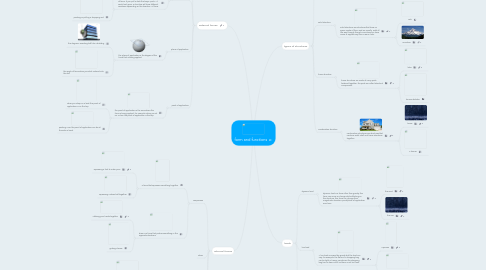
1. external forces
1.1. magnitude of force
1.1.1. magnitude is a measure of how strong the force is. if you gently bend a stick, the stick would not break. the bend is a low magnitude force
1.1.1.1. how hard you kick a ball
1.1.1.2. how hard you throw a rock
1.2. direction of force
1.2.1. the effect of the force depends on the direction of force, if you pull a door that says "push," it would not open. a structure will have different reactions depending on the direction of force.
1.2.1.1. opening a drawer
1.2.1.2. pushing or pulling a shopping cart
1.3. plane of application
1.3.1. the plane of application is the degree of the force that is being applied.
1.3.1.1. the degree a wrecking ball hits a building
1.3.1.2. the angle of force when you stick a shovel into the dirt
1.4. point of application
1.4.1. the point of application is the area where the force is being applied. for example, when you sit on a chair, the point of application is the top.
1.4.1.1. when you sleep on a bed, the point of application is on the top
1.4.1.2. pushing a car. the point of application can be at the side or back.
2. internal forces
2.1. compresion
2.1.1. a force that squeezes something together
2.1.1.1. squeezing a fruit to make juice
2.1.1.2. squeezing a stress ball together
2.1.2. shear is a force that pushes something in the opposite directions
2.1.2.1. rubbing your hands together
2.1.2.2. grating cheese
2.2. shear
2.3. torsion
2.3.1. torsion is a force that twists a structure
2.3.1.1. doing turns in the air
2.3.1.2. spinning a top or dreidel
2.4. tension
2.4.1. tension is a force that stretches the structure apart to expand or lengthen the structure
2.4.1.1. doing archery and pulling the string
2.4.1.2. stretching fabric
3. types of structures
3.1. shell structure
3.1.1. shell structures are structures that are hollow inside so they can be good containers. they use very little material so they are usually very light.
3.1.1.1. an egg
3.1.1.2. water bottle
3.2. solid structure
3.2.1. solid structures are structures that have no space inside of them and are usually solid all the way through though mountains can have caves or apples may have a worm hole.
3.2.1.1. rock
3.2.1.2. mountain
3.3. frame structure
3.3.1. frame structures are made of many parts fastened together. the parts are called structural components.
3.3.1.1. bike
3.3.1.2. human skeleton
3.4. combination structure
3.4.1. combination structures are structures that combine solid, shell and frame structures together.
3.4.1.1. house
3.4.1.2. a human
4. loads
4.1. dynamic load
4.1.1. dynamic load is a force other than gravity. this force can move or change while affecting on the structure. this force can change their magnitude, direction, point/plane of application over time
4.1.1.1. the wind
4.1.1.2. the rain
4.2. live load
4.2.1. A live load is caused by gravity but the load can vary. for example, the items in a shopping bag can be light or heavy. sometimes the shopping bag has no items at all so there is not live load.
4.2.1.1. a person
4.2.1.2. books on a book shelf
4.3. dead load
4.3.1. a dead load on a structure is caused by gravity and does not change at all. the dead load is caused by gravity acting on the structure itself.
4.3.1.1. a computer
4.3.1.2. a phone without phonecase

